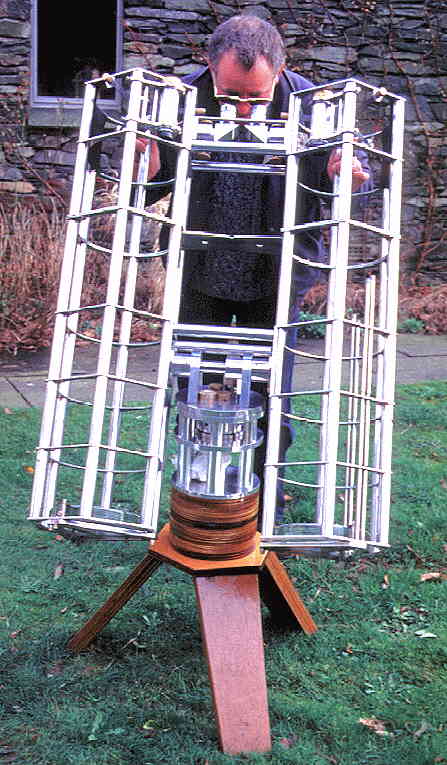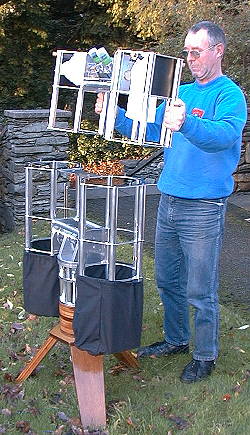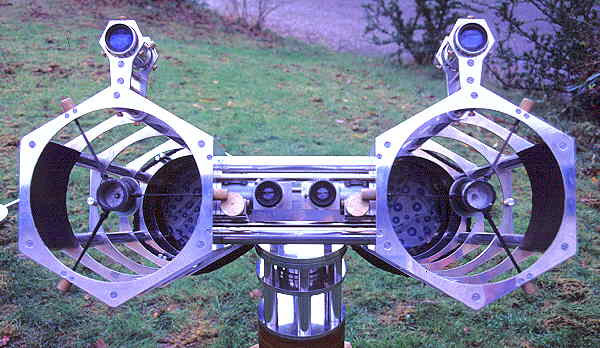by The Bolton Group

These Binoculars are not suitable for people with ears that stick out!
|
200mm (8-inch)
Binoculars
by The Bolton Group  These Binoculars are not suitable for people with ears that stick out! |
 Assembling the Binoculars. Captive bolts and wing nuts secure them together |
These binoculars were made by Gerald Bramall to his own design in polished aluminium with twin 200mm f6 mirrors. They are altazimuth mounted and hold collimation perfectly. They perform as good as they look! We have debated several times as to whether to build larger ones - but the 8-inch is a very practical size - easy to assemble - easy to transport - easy to collimate and easy to use - no ladders required! Our experience is that they are the optimum size. 26mm and 15mm plossl eyepieces are used and they provide stunning deep sky views from our dark site in the Lake District. The 26mm fit the Double Cluster in beautifully. There is always a long queue to try them. Until you have tried two eyes words cannot describe the experience they provide. It's as if there was no telescope there and you were actually out in space! |
 User's eye view |
Last updated: January 2007 Return to Telescope Making menu |